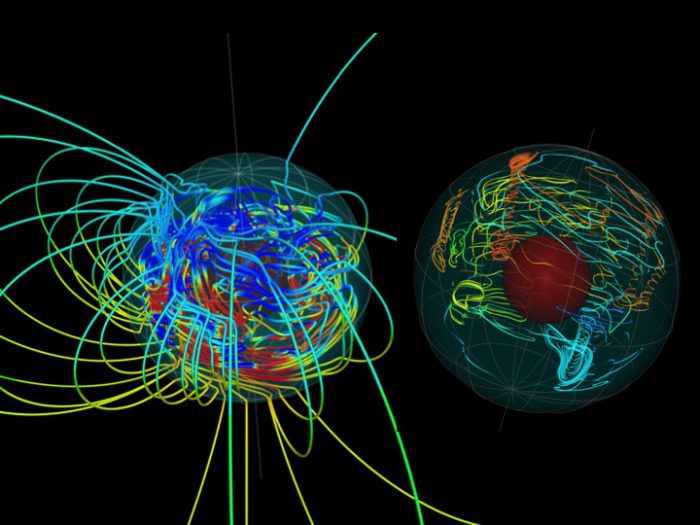How old is the Earth's core? It's the kind of question that you might not spend a lot of time thinking about.
For one, why wouldn't it be any different that the age of the rest of the planet? (About 4.5 billion years, for those who are keeping track.) And two, what does the age of the core—so far inside the planet—have to do with all of us up here on the surface?
Though the Earth's core is almost entirely metal, it is not just a single layer. Instead, it is two—a super-hot molten, or liquid, outer core and a cooler, solid inner core.
The entire core of Earth is likely about the same age as our planet itself. But new research suggests that the inner core only became cool enough to become solid around 1.5 to 1 billion years ago.
And believe it or not, that means a lot to us up here on the surface!
Every super shield ...
Earth's atmosphere is a vital part of creating and hosting life. (Getty Embed)
The abundance of life that we have on Earth is a pretty rare thing. Part of this is thanks to the distance we are from the Sun—our planet is warm enough to have liquid water, but cool enough to not have it all evaporate. (This 'just right' position in our solar system is also known as the Goldilocks Zone.)
But an equally important key to life is Earth's thick atmosphere. It not only provides breathable air and captures heat energy from the Sun to warm us, it also provides protection from everything from solar radiation to meteors. Without our atmosphere, Earth would be as barren as our Moon. But what protects our atmosphere?
Would you believe it's the inner core?
... needs its own super shield!

This image of the core's electromagnetic field lines (left), which are powered by heat flow (right) in the outer core. The inner core (red) helps add energy to these fields. (NASA)
But how? How does something that is about 2,900 kilometres (1,800 miles) under the surface protect a blanket of gas that stretches 480 kilometres (300 miles) outside the planet? It does this by generating an enormous electromagnetic field. Without this field, solar winds would blow Earth's atmosphere clean off the planet. Which would be really bad!
As we said, the inner and outer core are made of metal. Metal conducts electric currents, or flows. This is a key to creating electromagnetic fields. The outer core is liquid, and as it spins and swirls around, it creates these currents. On its own, an extremely hot soup of flowing molten metal can create strong electromagnetic fields. But the cooler inner core is what really adds extra power to our planet's field.
Materials near the edge of the inner core are cooled. When this cooler stuff mixes with the hotter stuff in the rest of the outer core, it creates supercharged movement. This is a little like how massive storms and winds in our atmosphere are caused by hot and cool air colliding. In other words, the inner core really gets that outer core churning and twirling. Together, this effect is called the geodynamo. And its intensity is what generates the strong magnetic field that protects our atmosphere.
Life-giving power
This fox is really thankful for our awesome inner core. (NASA)
Could life exist on the Earth without an inner core?
On one hand, the answer is yes. The earliest life on Earth dates back over four billion years. That's well before an inner core existed. But for the first three billion of those years, life was very basic. Stuff like single-celled organisms and microscopic floating things.
It wasn't until around 1.5 billion years ago that multi-cellular life even started, while the earliest animals only appeared around 600 million years ago. This is well after when the inner core was formed, greatly strengthening the power of our planet's magnetic field.
Does this mean that the inner core is what gave Earth complex life forms? Not on its own. But it is a part of what makes Earth so unique, even among billions and billions of worlds out there.
So thanks, inner core!
 How old is the inner core? And how does it affect the rest of the planet? (Illustration
How old is the inner core? And how does it affect the rest of the planet? (Illustration 









Cool! 😀
Look at the earth and then look at the lava.The lava is sooo close to earth.
😳